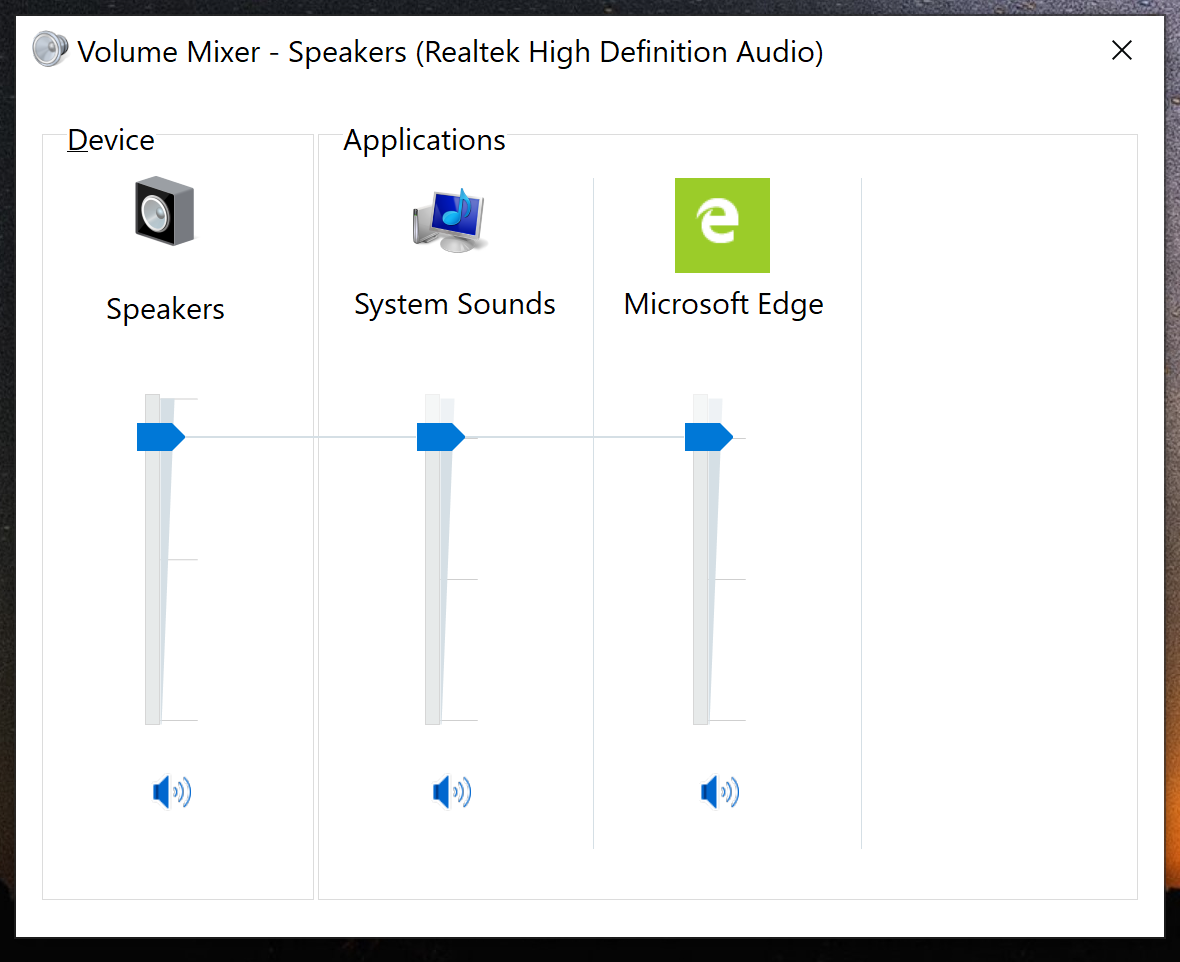Windows 10 Volume Mixer Not Saving Settings
At the moment of this writing, Windows 10 has a working Registry tweak which, when applied, allows you to switch between the old and new volume indicator. If you are not happy with the new sound applet, here is how you can enable the old Volume control in Windows 10. To enable the old classic Volume Control in Windows 10, follow these steps. Apr 30, 2018 - If so, Windows 10 includes the settings to change audio settings per app. Samsung 500GB 970 EVO M.2 $100 (Save $50). In the past, you would just use the Volume Mixer experience, but starting with Windows 10. If you don't see the sound settings, it's likely because you're not running Windows 10.

Discus and support Volume Mixer won't save settings in Windows 10 Customization to solve the problem; Hi, Looking for some suggestions. The volume mixer won't save settings, at least for system sounds.
Adjusting the volume and changing the system sound settings on Windows 10 has always been a straightforward process, but you were only able to manage them using Control Panel.However, starting with the, you can now manage speakers and microphones settings, and it's also possible to adjust the volume on apps and system sound individually using the Settings app.In this, we walk you through the steps to change the sound settings using the new options available starting with the April 2018 Update. You can also click the Device properties link, which opens additional speaker settings using the Control Panel experience:.General — You can enable or disable the speaker and access audio driver information.
Levels — Allows you to adjust master volume and balance settings. Enhancements — Includes settings to enhance audio with special effects. Advanced — Allows you to change default sample rate and bit depth. Aaj mehandi lagane ko aayi hai mp3 free download. Spatial sound — Includes the options to use Windows 10's spatial sound format, including 'Windows Sonic for Headphones' and 'Dolby Atmos for Headphones.'
Similar to using the speaker icon in the taskbar, on the Sound page you can also change the system master volume with the slider.You'll also find a Troubleshoot button that starts the audio troubleshooter to fix common sound problems automatically. You'll notice that the 'Volume Mixer' is still accessible, but it'll eventually go away as these settings can now be found in 'App volume and device preferences' page.How to manage advanced Windows sound options using SettingsThe new Sound settings also include a number of advanced options to control volume and input and output devices. (This experience replaces the Volume Mixer, which is still available in the April 2018 Update.)To access and customize app volume and device preferences, do the following:.
Open Settings. Click on System. Click on Sound.Under 'Other sound options,' click the App volume and device preferences option.The first thing you'll find on this page is the slider to control the system master volume and adjust all sounds. On the right, there are two drop-down menus to select the default speaker and microphone, which are the same settings that you can customize in the Sound page.At the bottom of the page, you can adjust volume for specific apps and system sounds as a percentage of the master volume.


Discord Windows Volume Mixer
Alongside the ability to change the volume for apps and system individually, this page also allows you to select the default output and input device if you have multiple speaker setups and microphones.If you want to revert all your changes, you can use the Reset button to roll back to Microsoft's recommended sound settings. Wrapping things upAlthough the April 2018 Update finally ports the sound options to the Settings app, you'll still need to use the Control Panel experience to change more advanced properties. However, eventually, those options are also expected to move in some form to the Settings app. More Windows 10 resourcesFor more helpful articles, coverage, and answers to common questions about Windows 10, visit the following resources:.